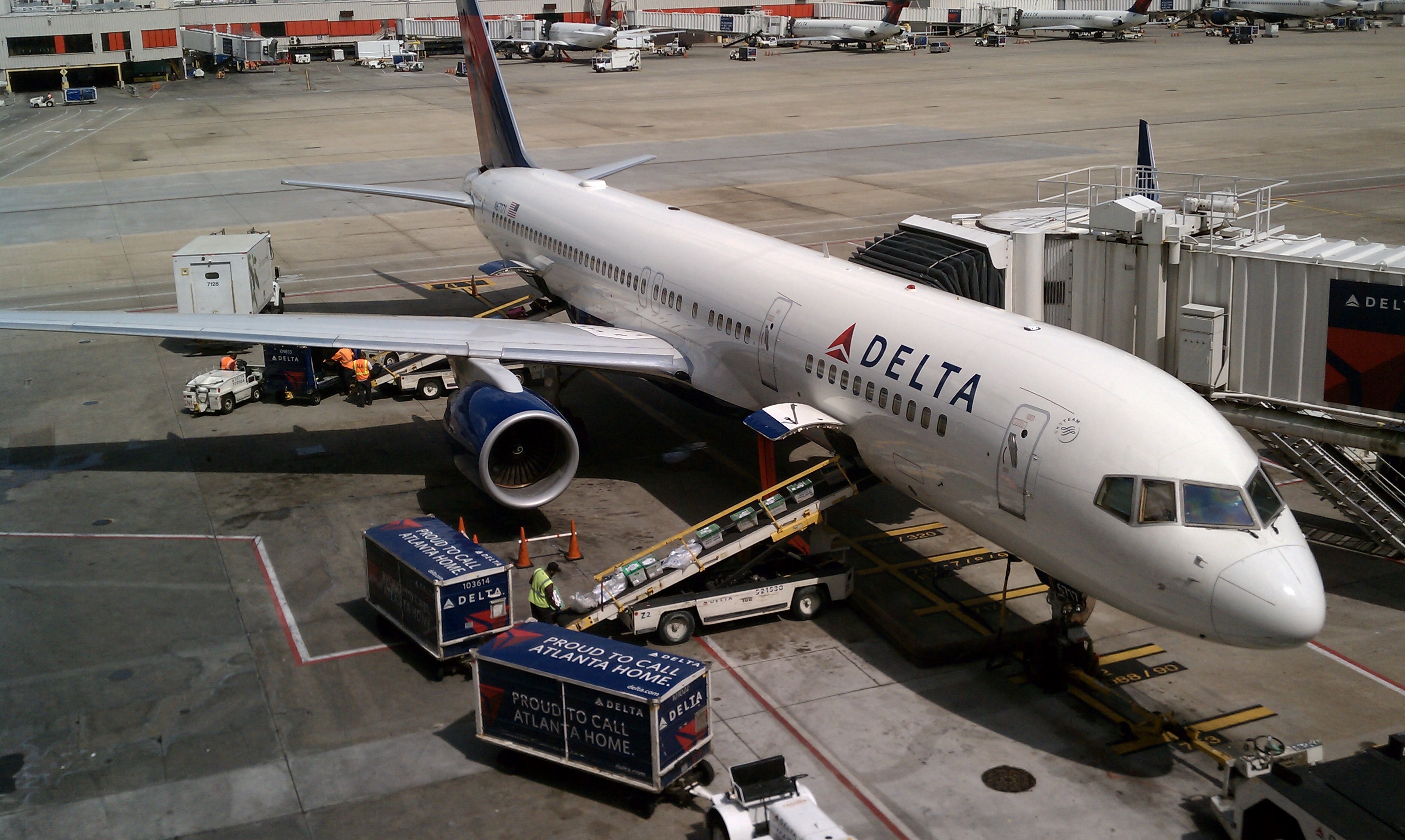A Few Miles and Points Tips To Get You Going
 I wanted to introduce the concept of Miles and Points for those who may want to save money on their travel expenses. So far, I’ve provided guidelines for getting involved with Miles and Points in my post “How to Travel More for Less,” offered a real-world example of how Miles and Points can save you money in my post “Miles and Points – A Real-World Example,” and given you an outline for beginning your own journey into Miles and Points in my post “Getting Started with Miles and Points.”
I wanted to introduce the concept of Miles and Points for those who may want to save money on their travel expenses. So far, I’ve provided guidelines for getting involved with Miles and Points in my post “How to Travel More for Less,” offered a real-world example of how Miles and Points can save you money in my post “Miles and Points – A Real-World Example,” and given you an outline for beginning your own journey into Miles and Points in my post “Getting Started with Miles and Points.”
Now I want to give a few tips I’ve learned along the way that may help as you get started building, and redeeming, those Miles and Points balances.
Tips
Business and first class award redemptions on long haul, international flights are the best use of airline miles. When factored on a mile/dollar calculation, and especially when the comfort factor for an eight, ten or more hour flight is considered, business/first class international redemptions are the way to go.
That said, the absolute best award redemption is the one that will get you to the destination you want for as close to free as possible.
If you can avoid it, you never want to redeem airline miles at standard/regular redemption rates. When I first started looking at Miles and Points, I was flabbergasted at how many points it was to fly from the U.S. to other countries – especially in first and business class. Then I learned you should always plan your redemptions/trips around “saver” award, or similarly named, rates.
An example: A Standard Award on a United flight from Washington D.C.’s Dulles airport to Frankfurt, Germany in economy class would cost 140,000 miles and $295.80 in taxes/fees (round-trip). However, a Saver Award on a similar flight in economy would be 60,000 miles plus taxes/fees (round-trip).
As you can see, a significant difference between standard and saver awards.
The same is true of business class and first class award redemptions. Take that same D.C. to Frankfurt example. A first class, round-trip redemption for 380,000 miles?! No way! 160,000 miles at the Saver level for a round-trip ticket is a little more doable.
And business class for this trip would be 310,000 miles for a standard round-trip award while the saver level would be 120,000 miles round-trip.
So, while availability will be limited, and travel dates will be restricted, always go for a saver or low-level award.
Some airlines are better than others at finding saver/low-level award availability. Delta airlines is notorious for its horrible low-level award availability. You can use Delta miles, but more times than not, you’ll be having to use them at an extremely high rate of redemption.
Unfortunately, over the past few years, American and United have copied some of Delta’s award tactics, making low-level award availability scarce, and using variable pricing in its stead. Now, instead of a set 25,000 miles for an economy class, roundtrip flight within the continental U.S., you’ll be looking at 30,000, 32,000, 35,000 or more, depending on a variety of factors, most of which are unknown except to the computer whose algorithms are setting the award pricing at the time you’re doing your flight search.
That said, you can still find low-level award availability on all three major carriers, the itineraries might not be ideal, though.
Southwest, which primarily flies within the continental U.S. (and select locations in Mexico and the Caribbean) is the best for getting award seats, but they have a different type of frequent flyer program than the other airlines and thus are not always considered side by side with the major U.S. carriers.
When flying internationally, you don’t have to book with the airline whose points you’ve collected. Airlines are part of alliances. There are three alliances, Star Alliance, Oneworld and Skyteam. Delta is part of Skyteam, United is part of Star Alliance and American is part of Oneworld.
Say you want to fly from D.C. to Frankfurt, Germany using your United MileagePlus miles, but you don’t like United’s availability. You can search for availability on any other Star Alliance partner airline and book tickets on that airline using United’s customer service reps and miles.
This process can get confusing. Just keep in mind that you can fly on a variety of airlines, using the miles you’ve accumulated, as long as those airlines are all in the same alliance. Makes for a much wider array of flights and availabilities from which to choose.
The only downside, depending on the alliance/airline, you may have to use more miles for a specific trip than you would booking with the airline whose miles you are using.
Don’t pay credit card annual fees unless the card is really worth it. As I ran through the numerous credit cards, and their associated annual fees, in my post “Getting Started with Miles and Points,” you may have been thinking – that’s a lot of annual fees to be paying.
You’ll notice many co-branded credit cards offer sign-up deals that waive the annual fee for the first year you hold the card. The key is to only keep the cards that offer a distinct benefit for the annual fee once it comes due.
The hotel cards are good examples of this. Most give you an annual free night on the card’s anniversary, more than making up for the annual fee…if you actually use the free night, that is.
There are other cards – like the Chase Sapphire Preferred – that offer enough benefits to also keep once the annual fee kicks in.
But there are plenty of cards that you’ll want to cancel prior to paying that annual fee. Once you’ve received the sign-up bonus, many of them don’t offer much incentive to keep the card, especially when there are so many other cards just waiting for your application.
When canceling a card to avoid its annual fee, you always want to try to transfer its credit line to another card (within that same bank, i.e. Chase, American Express, etc.) to avoid impacting your credit score. Losing a $5,000 or $10,000 credit line by simply closing an account could lower your overall credit score.
Some banks do not allow for the transfer of credit lines – Citibank comes to mind – but for the ones that do, it’s best to keep the credit line amounts you already have.
Utilize business credit cards to build even more points. The majority of co-branded credit cards have both personal and business versions. Even though you may not have a “real” business, you can still apply for a business credit card using your social security number and listing your business as a sole proprietorship.
You don’t want to lie, but if you sell things on eBay, or are even considering starting a side business, you should consider applying for business versions of co-branded credit cards in addition to the personal versions. Just another way to build those Miles and Points balances.
If you’re having difficulties meeting minimum spends for sign-up bonuses, there are ways that can help. In the Miles and Points game, there’s a thing called Manufactured Spending. This is a way to meet minimum spend requirements, or build miles or points balances, for little money.
The process is somewhat complex, so I won’t get into it, just know that if you’re not getting into the Miles and Points game because you don’t think your monthly spending will be enough to meet the minimum spends to get credit card sign-up bonuses, there are options. A quick Google search for “Manufactured Spend Techniques” will provide some ideas.
Learn Even More
Which brings me to the most important aspect of Miles and Points. Reading and learning from a variety of sources.
Flyertalk.com This is a forum where Miles and Points aficionados discuss everything Miles and Points related. Warning, it’s a lot of information. Start slowly and after a while you’ll get a handle on what these “pros” are talking about.
A better source for those new to Miles and Points is following individual bloggers. In addition to the information you’ll get here at Savings Beagle, below are a few other bloggers that provide a well-rounded look at the Miles and Points hobby.
Gary Leff, View from the Wing
Daraius Dubash, Million Mile Secrets
So there you have it. Miles and Points can become an addictive habit. But a habit that can provide you with a wide variety of travel related experiences for very little money.
If you have any questions on anything we’ve covered in this introductory Miles and Points series, feel free to ask. And if you’d like a personalized Miles and Points plan-of-action, please visit our partners at Financially Savvy Travel for options.
As always, happy saving and happy travels.
image courtesy of Salvatore Vuono/freedigitalphotos.net



